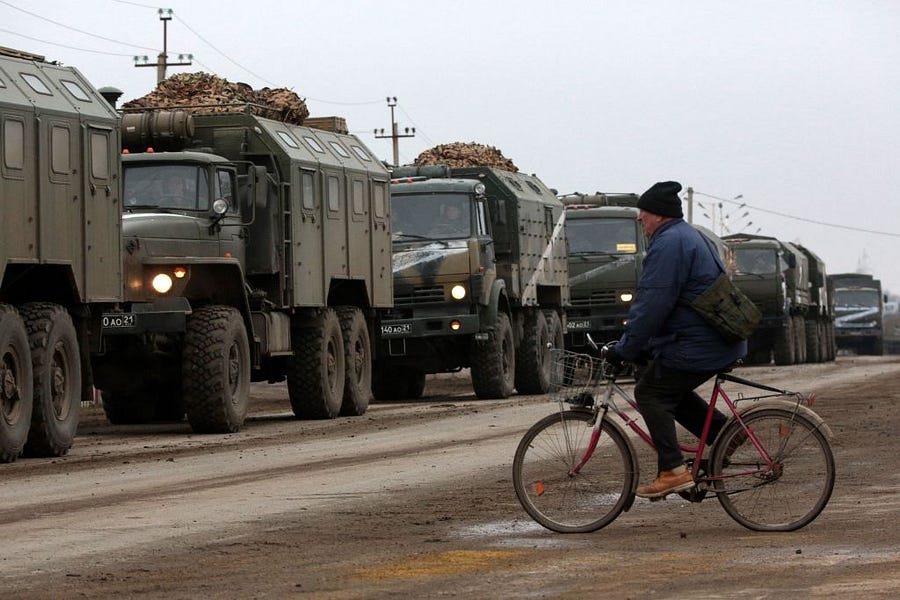Russia’s invasion of Ukraine has been more significant and more disorienting than many imagined it would be. The situation remains fluid and, at times, opaque regarding the distribution of forces, each nation’s stated and unstated objectives, and the reliability of battlefield reports.
The following are some of the questions I’ve been considering along with my current thinking on each.
First, where is the cyber?
Myself and other observers were convinced that Russia, when it began its offensive against Ukraine, would employ broad cyber capabilities to disable Kyiev’s defenses, confuse political command and control, and sow doubt and fear within the civilian population. We believed this because the Russians have the capabilities for such operations, because they are proven in their effectiveness, and because they are relatively low-risk for the attacker.
But, while there have been some digital disruptions—distributed denial of service (DDoS) attacks on government websites and a few Ukrainian banks—the anticipated cyber deluge has not yet materialized.
I can think of a few possible reasons for this, but honestly none of them are especially compelling. Maybe Putin believes his military superiority is so significant that he doesn’t need to takedown Ukraine’s networks because he can just bomb them from afar. If this is the case, it didn’t work because these networks are still largely functioning.
Perhaps he was concerned that a large-scale cyber attack, like shutting down critical infrastructure or the NotPetya wiperware attack in 2017 that spread to millions of computers around the world and caused more than $10 billion in damages, would provoke a more aggressive Western response or spread beyond Ukraine’s borders. This would be a rational, but overly cautious calculation, because there are many ways to turn off Ukrainian defenses that fall well short of a NotPetya-scale attack.
The most optimistic reason I can come up with is that Putin did try a cyber attack against Ukraine and that it failed. It could be the case that Ukranian and allied defenders were able to block, blunt, or repel a digital offensive from Moscow and that this, in part, helps to explain why Russia’s advance has not been as quick or as effective as was anticipated.
To be clear: I have no evidence that this is the case and there are many reasons to believe it is not the correct explanation. Even so, it is possible.
Second, what’s next? I’ve also been considering which variables are most likely to shape the next phase. I think there are three: Russian rules of engagement (ROEs), Ukrainian lethality, and hostility bleedover.
The way Russia fights in Ukraine will fundamentally shape Putin’s political and military options and he seems to understand that, for example, NATO and other nations may feel compelled to take stronger actions if a large-scale humanitarian crisis unfolds in Ukraine. While his actions have been unjustified and criminal, they have also been relatively constrained thus far. Most attacks have been against explicitly military targets and have not resulted in the types of mass civilian casualties that would have occurred if the Russian military had chosen to simply bomb Ukrain into submission (which it could have done).
Instead, Moscow is choosing more traditional maneuver warfare aimed at quickly cutting off Ukraine’s political leadership and subduing the nation with minimal damage. There’s no reason to believe Putin is making these choices out of some sense of benevolence—he’s a coldblooded killer—but there is a strategic rationale that seems to be in play.
The most likely thing to rile Putin’s rage and to cause more aggressive ROEs is if the Ukrainian military is able to kill a lot of Russians. As I’m writing this, three of the four advancing Russian columns seem to be experiencing greater resistance than they anticipated, with only those moving in from Crimea making considerable gains. There are also reports that the Ukrainian military has been able to retake at least one airfield and a few other positions. While Russia has more than enough reinforcements to realize its aims, I would expect Russian aggression to be dialed way up if these gains require significant losses in life and material.
The final variable will be the possible bleedover of hostilities beyond Ukraine. As already discussed, Russia appears to be trying to manage this possibility but such risks are far from contained. If a cyber attack leaks into global networks or if an ill-considered tactical choice imperials a NATO ally, the situation will become significantly more dangerous for everyone.
A third and obvious question is, what should the United States do now? Here are another three ideas.
First, we should dismantle non-state cyber threats aligned with Russia.
There are a host of ransomware groups, hacking syndicates, and individual hackers who are directly supported or tacitly enabled by the Russian government. On Friday, for example, the Conti ransomware team—a group of hackers who have attacked hospitals, 911 dispatch carriers, and even law enforcement —announced its “full support” of Moscow and promised, “if any body will decide to organize a cyberattack or any war activities against Russia, we are going to use our all possible resources to strike back at the critical infrastructures of an enemy (sic).”
These groups have been used by Mosocow before as a way of conducting cyber attacks while maintaining a veneer of deniability, and they would likely be used in a cyberattack against the United States.
Even before this last week, these non-state cyber actors have more than proven to be a threat, with ransomware attacks having grown by more than 150 percent in the last several months. In light of this, I say game-on and wish U.S. Cyber Command, the FBI, and the CIA good hunting.
A second recommended course of action is shaping a battlefield that advantages Ukraine and disadvantages Russia.
This begins with providing the Ukrainian military with weapons, ammunition, and other capabilities that will enable them to impose the maximum costs on Russia’s military and, ideally, send them home bloodied and beaten. No Ukrainian should run out of ammunition.
Relatedly, the United States should provide robust intelligence and targeting support, up to and including the deployment of clandestine and covert capabilities that multiply Kyiv’s ability to find, fix, and finish military targets.
This should be further supplemented with electronic warfare capabilities that facilitate Ukraine’s operations and frustrate those of Russia. We should not have a large military force deployed to this war zone, but these capabilities can be brought to bear discreetly and would be a massive force-multiplier for a democracy that is outmatched and fighting for its survival. It is also a chance to severely degrade the Russian military precisely at a moment when it appears to be more aggressive and dangerous.
Third and finally, the United States should apply every sanction available and turn them all to “11.” An incrementalist approach on sanctions had its rationale and its opportunity. That time has passed, because we are no longer trying to deter Russian but to punish it.
We should also put on a full-court press with our European partners and allies to help them understand that, whatever pain they are anticipating by applying these sanctions, this pain pales in comparison to what would accompany a victorious Valdimir Putin unencumbered by political and economic consequences for his actions.
Some will read this and conclude it is too risky. That these actions risk escalation and even a direct conflict between the United States and Russia. An honest assessment must admit that this is true. But it must also be accepted that there is no risk-free path forward. Which leaves us with three questions: What will it take to change Putin’s mind or eliminate his ability to pursue his ambitions? Are we willing to do these things? What are the consequences of failure?
How we answer these questions is crucial. The choices and actions of Vladimir Putin are dangerous and destabilizing precisely because they move the entire world into a more precarious position where war is more likely.







Please note that we at The Dispatch hold ourselves, our work, and our commenters to a higher standard than other places on the internet. We welcome comments that foster genuine debate or discussion—including comments critical of us or our work—but responses that include ad hominem attacks on fellow Dispatch members or are intended to stoke fear and anger may be moderated.
With your membership, you only have the ability to comment on The Morning Dispatch articles. Consider upgrading to join the conversation everywhere.